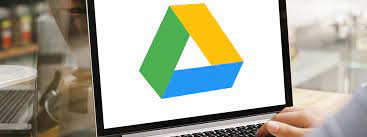Navigating the Google Drive interface is essential for effectively managing and accessing your files and folders. Here’s a guide to help you navigate the Google Drive interface:
- Main Menu: At the top left corner of the Google Drive interface, you’ll find the main menu icon (three horizontal lines). Clicking on it opens a menu with various options, including My Drive, Shared drives (if available), Recent, Starred, and Trash. My Drive is where your personal files and folders are located.
- Home Screen: When you first log in to Google Drive, you’ll see the Home screen. This screen displays your most recent files and folders.
- Side Menu: On the left side of the screen, you’ll find the side menu. This menu includes options like My Drive, Shared Drives, Recent, Starred, and Trash. My Drive contains your personal files and folders, Shared Drives are shared spaces for collaborative work, Recent shows your recently accessed files, Starred contains files you’ve marked as important, and Trash contains deleted files.
- Search Bar: Just below the main menu, you’ll see a search bar. You can use it to search for specific files or folders by entering keywords or file names. Google Drive has powerful search capabilities, allowing you to find files based on criteria like file type, owner, or specific keywords.
- File and Folder View: The main area of the Google Drive interface displays your files and folders. Files are represented by icons, and folders have a folder icon. You can switch between different viewing options using the buttons on the right side. The available options include Grid view, List view, and Details view.
- File Actions: When you hover over a file or folder, you’ll see a vertical ellipsis (three dots) on the right side. Clicking on it opens a menu with various actions you can perform on the selected item. Some common actions include opening, sharing, downloading, moving, renaming, deleting, and more.
- Toolbar: At the top of the interface, you’ll find a toolbar with several buttons that provide quick access to various functions. These buttons include New (to create new files or folders), Upload (to upload files from your computer), Shared with me (to view files others have shared with you), and more.
- Details Pane: When you select a file or folder, a details pane appears on the right side of the interface. It displays additional information about the selected item, such as file size, creation date, sharing settings, and activity history. You can make changes to the details, such as renaming the file, changing permissions, or adding it to a folder.
- Sorting and Filtering: Google Drive allows you to sort and filter your files and folders based on different criteria. At the top of the main area, you’ll find sorting options that let you arrange files by name, date modified, file type, and more. Additionally, you can use the “Filter” button to narrow down the displayed files based on file type, ownership, or other attributes.
- Sharing and Collaboration: Google Drive makes it easy to share files and collaborate with others. You can share files by right-clicking on them and selecting “Share.” You can then enter email addresses or shareable links to grant access to specific people or groups. You can also choose permissions for each collaborator, allowing them to view, comment on, or edit the file.
- Google Drive Settings: To access your Google Drive settings, click on the gear icon in the top right corner of the screen. Here, you can manage settings related to storage, notifications, offline access, and more.
By familiarizing yourself with these elements of the Google Drive interface, you’ll be able to navigate and manage your files and folders with ease.
SHARE
